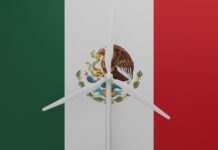See also: – SFDR Articles 8 and 9 may ‘disappear altogether’ as consultation launches
Recently, the Dutch financial watchdog, the AFM, fired a shot across the bow. They cautioned fund managers against using terms like ‘Article 8’ or ‘Article 9’ in their marketing to create the illusion of “a certain degree of sustainability” through a non-existent label.
Back on this side of the English Channel, we’re all eyes and ears, waiting for the Financial Conduct Authority (FCA) to unveil its final rules on investment labels and sustainability disclosure requirements (SDR). These rules will demystify the criteria required to qualify for one of (probably) three coveted sustainability labels – actual fund classifications.
However, in September, the European Commission raised the curtain on a thought-provoking consultation paper looking into “exploring possible options to improve the [SFDR] framework.” This was like adding a new plot twist to an already convoluted story.
The introduction of an EU fund labelling scheme
The paper begins with a barrage of questions about how SFDR interacts with the broader EU sustainable finance framework. It also acknowledges a few “shortcomings” in the regulation. One of these is its unintended transformation into a classification and labelling scheme when it was never designed to be one.
As a result, and despite the proliferation of national ESG labels across Europe, the Commission is pondering the idea of “developing a more precise EU-level product categorisation system based on precise criteria.”
One of two potential fund labelling schemes could emerge from the Commission’s consultation. The first one aims to expand on Articles 8 and 9 by turning them into genuine labels. The second, more radical approach, suggests obliterating the distinction between Article 8 (promoting environmental and social characteristics) and Article 9 (sustainability as an objective). Instead, a brand-new set of labels would emerge to dictate the criteria for disclosure.
Interestingly, these potential EU labels bear a striking resemblance to those the FCA contemplated last year in its CP22/20. You could sum them up as Impact, Sustainable, Transitioning (or, in FCA-speak, Sustainable Impact, Focus, and Improver). There’s even talk of a possible fourth category in the EU for funds with an exclusion policy.
But the real twist in the tale lies in the introduction of “products with a transition focus” – a major departure from the SFDR’s current definitions. The Commission’s consultation also delves into the pros and cons of differentiating between Sustainable and Impact, essentially akin to the difference between Article 8 and 9. It explores the value of distinguishing instead between products with a social versus an environmental focus.
Should sustainability categories be mutually exclusive?
One more plot twist comes when we explore the concept of “mutually exclusive” categories. In the EU consultation, a fund can belong to just one category even if it meets the criteria of several categories. On the other hand, the UK’s interpretation insists on making the definitions of the three categories mutually exclusive, leaving no room for ambiguity.
Initially, references to the SFDR used the shorthand “light green” for Article 8 and “dark green” for Article 9, implying a clear hierarchy. This led to further confusion when many Article 9 funds were “downgraded” to Article 8 last year after an unsuccessful attempt by the Commission to provide clarity around the sustainable investment threshold for Article 9 funds.
The consultation now questions whether additional disclosures should be required when a product falls within a specific sustainability product category, further emphasising the hierarchy – a hierarchy that would persist if Article 8 and 9 become the formal fund categories.
Interestingly, the FCA appears to take a different path. It refuses to insinuate that one category is greener than another, even avoiding using shades of green for the labels themselves. Their stance is unequivocal: “There is no hierarchy between the proposed categories.”
So, are the UK and EU regulators aligning their sustainability disclosure regimes, or are they just caught up in semantic differences, such as the number of categories and their mutual exclusivity?
Much of this will be resolved by the end of the year when the FCA delivers its policy statement and final rules. However, the EU consultation, which remains open until 15 December 2023, promises more twists and turns into the new year, as the Commission digests the responses.










